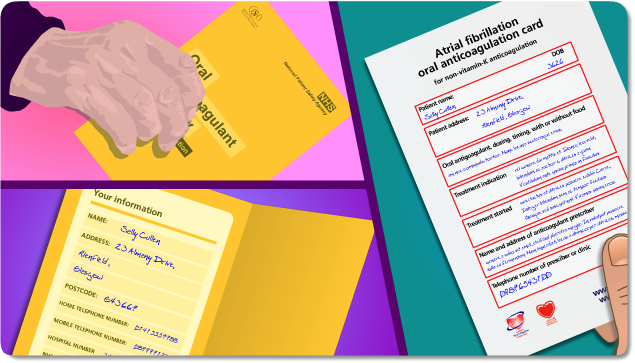
The pharmacist gives Sally the NPSA “Yellow Booklet” after filling in her details and completing the Warning Card that she should show to Health Care Professionals.
Using the booklet as a guide the following aspects of her treatment are covered:
- Why she is on warfarin and what it does
- Current dose and duration of treatment (lifelong in AF unless there is a reason to stop)
- The colours of the different strengths of warfarin tablets and how to make up her dose
- How she should take the tablets, focussing on why it is important to take her tablets, ways to remember if she has taken a dose and making sure she has enough tablets at home
- What to do if she misses a dose
- The need for blood test (INR) and where these will be done
- Side effects of treatment and what to do if they happen
- The need to tell other health care professionals, especially dentists and hospitals, that she is treated with warfarin
- The effect of other medicines, diet and alcohol on warfarin therapy
- For women, the effect on pregnancy and periods
Sally is given the opportunity to ask questions about her treatment and reminded that she has any questions or concerns at any time she should ask her doctor, pharmacist or nurse.
Pulse point
- Information on anticoagulant therapy should be individualised to each patient, not all may be relevant. Information regarding risk associated with occupation, lifestyle, sports etc may have to be covered.
You may find the following link on the NPSA website useful. - At present there is no information source like the “yellow booklet” for the novel oral anticoagulants, however the European Heart Rhythm Association have drafted a patient held-card for the new oral anticoagulant.
Page last reviewed: 29 Jul 2020


